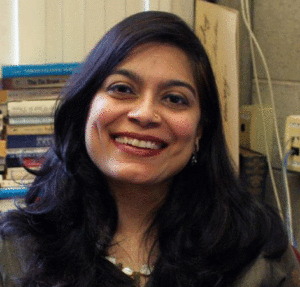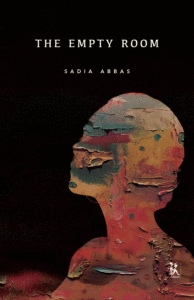Book Review: The Empty Room

The author

Sadia Abbas’ debut novel, The Empty Room, is a pleasant read both for its content and style. The novel, set in the 1970s, weaves the story of a young artist who grapples with her marriage, sexuality and artistic impulse in a country undergoing dramatic transformations. The ambition is well executed and the novel remains both intimate and deeply socio-political in its resonance.
Tahira, the protagonist of The Empty Room, signifies the evolving urban landscape and the gradual awakening of political consciousness. In a way, the disillusionments of the age come while she is at a crossroads in her intimate, awe-inspiring, yet troublesome married life.
The period between 1969 to 1979 was a defining moment in Pakistan’s history. The country’s geography was redrawn after a civil war and ended in the creation of Bangladesh in 1971. The turbulent politics of Zulfikar Ali Bhutto’s civilian government in the truncated Pakistan was no less autocratic than that of its predecessor. The brief democratic interlude failed to tackle the strongly embedded authoritarian trends within the polity and ended with another martial law, in 1977, followed by Bhutto’s execution in 1979.
The political history is starkly present throughout the novel. Its most notable strength, perhaps, is the epic style of acquainting and engaging the character of Tahira with the reader. The plot begins the morning after Tahira’s marriage to Shehzad – a seemingly good choice for a spouse. Yet the mood of the elaborately-painted scene signifies a far-from-smooth ride for the new bride.
Tahira tries to blend into the family and makes compromises along the way, to keep them happy. While the narrative, in its intimate portrayal of domestic scenes, resonates well with that of Jane Austen, it also contains elements of classic Urdu storytelling. The mix makes The Empty Room stylistically unique; blending different traditions to create a distinct voice.
Tahira has to straddle a loveless marriage, petty in-laws and, above all, the self-inflicted guilt and agitation that if she walked out of the marriage, her younger sisters would have problems finding suitable matches. While such burdens are not uncommon today, they were far more prevalent in the period in which the novel is set. It is only much later that Tahira’s husband supports her intention to resume her artistic endeavours.
The in-laws treat her new indulgence as a means to pomp and showmanship. Her art is viewed as yet another transaction in the household. Yet art is an essential part of Tahira’s existence. Her recourse to painting rescues her to some extent.
Shehzad, meanwhile, is a curious character. An archetype middle class Pakistani man torn between his unconscious patriarchal norms and a faint desire to rise above them. The writer treats his character with a quiet deftness, thus allowing for a nuanced portrayal instead of a two-dimensional villain. At the other end of the spectrum is Tahira’s brother, Waseem, who encourages her to paint. A political activist, Waseem tunes the readers in on the political upheavals of the ’70s. One cannot help but notice the author’s thoughtful treatment of this character.
Fiction is a useful vehicle through which a writer can engage with the political history of a place. And Waseem, in numerous ways, embodies the angst and turbulence of the ’70s. His socialist leanings and struggles for a ‘different place’ lead to a disillusionment with leaders who end up betraying the causes they espoused. Student suppression is a parable of what happened to the ideal of democracy in that decade. The story of Bhutto’s autocratic leadership is yet to be recorded in its entirety. The novel, therefore, is a vital narrative that helps us understand Pakistan through the lives of its myriad characters.
“The political situation was absurd. Promises were being broken. The ever-mutable constitution had been amended to make the most hated minority more hated… Members of the cabinet were being bullied and intimidated; students were under attack, kidnappings, murder, madness… It went on, but they hadn’t given in. ‘And we won’t!’ he muttered fiercely to himself, pulling savagely at a strand of the root of the oleander plant. He angled it into the new pot and covered it with soil, smoothing it with a lingering pat and moved the plant back into the corner next to the desk. The work continued… and the battle with disillusion.”
In a dramatic turn of events, Waseem loses his close friend and comrade at the hands of law enforcement agencies – a familiar theme that has continued to haunt Karachi for decades.
But political preoccupations merge with the personal anguish of the characters. Andaleep cannot bear seeing her old friend Tahira give up the essentials of her self in a conventional marriage. Abbas explores the deep bond with a great deal of sensitivity.
Tahira’s story resembles that of millions of Pakistani women, who navigate loveless marriages, familial claustrophobia and empty rooms. There is a silver lining though. Tides are changing in urban Pakistan, with more and more women asserting themselves and bidding farewell to unworkable relationships.
Even in the suffocating milieu that Abbas paints like a miniaturist, Tahira finds her way. Her evolution lies at the core of the story. It is not all too different from a country that negotiates with ruthless regimes, survives and sometimes strikes back.
Raza Rumi is a Pakistani author, academic, policy analyst, and a journalist. He is editor of Daily Times and a faculty member at Ithaca College and Cornell University, USA


